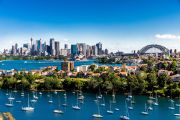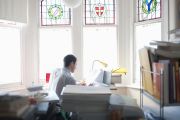
The big switch: tenants take up more space in top towers
Demand for prime CBD space has risen in the past six months, while the occupancy of B-grade space has fallen overall, as a wide-ranging shake-out of the nation’s battered office markets gathers pace.
About 65,000 square metres of premium and A-grade was taken up in the country’s top office towers, while net demand for B-grade space fell more than 40,000 square metres, according the Property Council of Australia’s six-monthly office market report.

A powerful combination of falling valuations, weaker tenant demand overall and the rise of remote work has hammered the nation’s office market over for more than two years.
Experts anticipate those challenges, spurred on by demand for more sustainable real estate, will trigger upheaval in the sector and ultimately lead to a new generation of superior buildings.
The switch-up into better digs is very apparent in Sydney, the nation’s biggest and most expensive market, where around 30,000 square metres net was taken up in premium space.
Swing to quality buildings
Demand for A-grade retreated by around 10,000 square metres and in the B-grade category by around 25,000 square metres.
“Corporate tenants continue to actively shift to central locations and higher quality buildings,” Andy Collins, Dexus’ executive general manager for office, told The Australian Financial Review.
“The PCA data shows that in the Sydney CBD, net absorption of premium space has significantly outpaced the total market.”
The country’s overall vacancy rate – taking in CBD and suburban markets – eased from 14.8 per cent to 14.6 per cent over the six months to July. That level of vacancy is 4.2 percentage points above the historical average.
Overall, the CBD vacancy rate remained relatively stable, increasing from 13.5 to 13.6 per cent nationally, while non-CBD areas fell from 17.9 to 17.2 per cent.
Brisbane’s vacancy dropped to 9.5 per cent, the first time its has been under 10 per cent in more than a decade.
Sydney’s CBD office vacancy rate fell from 12.2 to 11.6 per cent, while Adelaide dropped from 19.3 to 17.5 per cent.

However, the vacancy rate rose in three CBD markets, including Melbourne, where it jumped from 16.6 to 18 per cent.
Property Council chief executive Mike Zorbas said there was room for “very cautious optimism” in parts of the office market.
“We continue to see a preference for high-quality office spaces, with Sydney and Adelaide being the only capitals to record higher prime vacancy than secondary vacancy,” he said.
“Some of the older, lower-grade office buildings that are in lower demand are now being withdrawn from the market to be repurposed through refurbishments or converted into residential spaces or hotels.
”Of note, Melbourne still faces stiff challenges. The Victorian government simply has to get some of its workforce back a few days a week to support what must again be a thriving city.”
New landmarks
The swing toward better-quality space is helping make the business case for a new generation of office landmarks in Sydney, including Charter Hall’s Chifley South, Mirvac’s 55 Pitt Street and the Atlassian tower, which will be among the few new buildings completed this decade.
Construction began three months ago on Chifley South, and it is already 60 per cent pre-leased, according Carmel Hourigan, who leads fund manager Charter Hall’s office business.
“As we came out of COVID-19 one of the biggest trends we’ve seen globally has been this change from people moving out of secondary into prime and premium because they require better amenity, better environmental ratings,” she said.
“That’s been a catalyst for a lot of employers to get their people back in the office
“In the last four months we have really felt that momentum coming on the ground, to a level where landlords in the really prime end of the market are feeling a really positive turn.”










